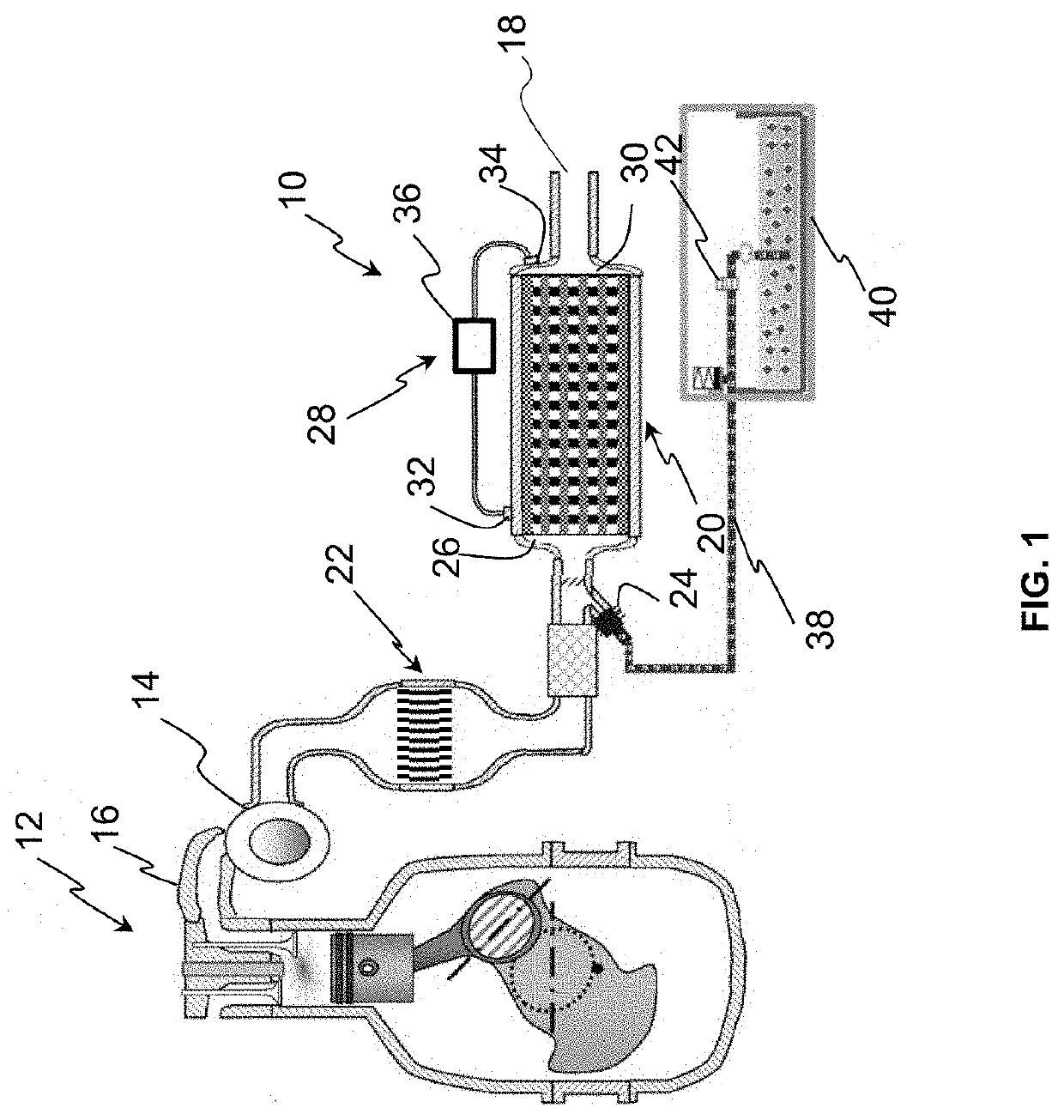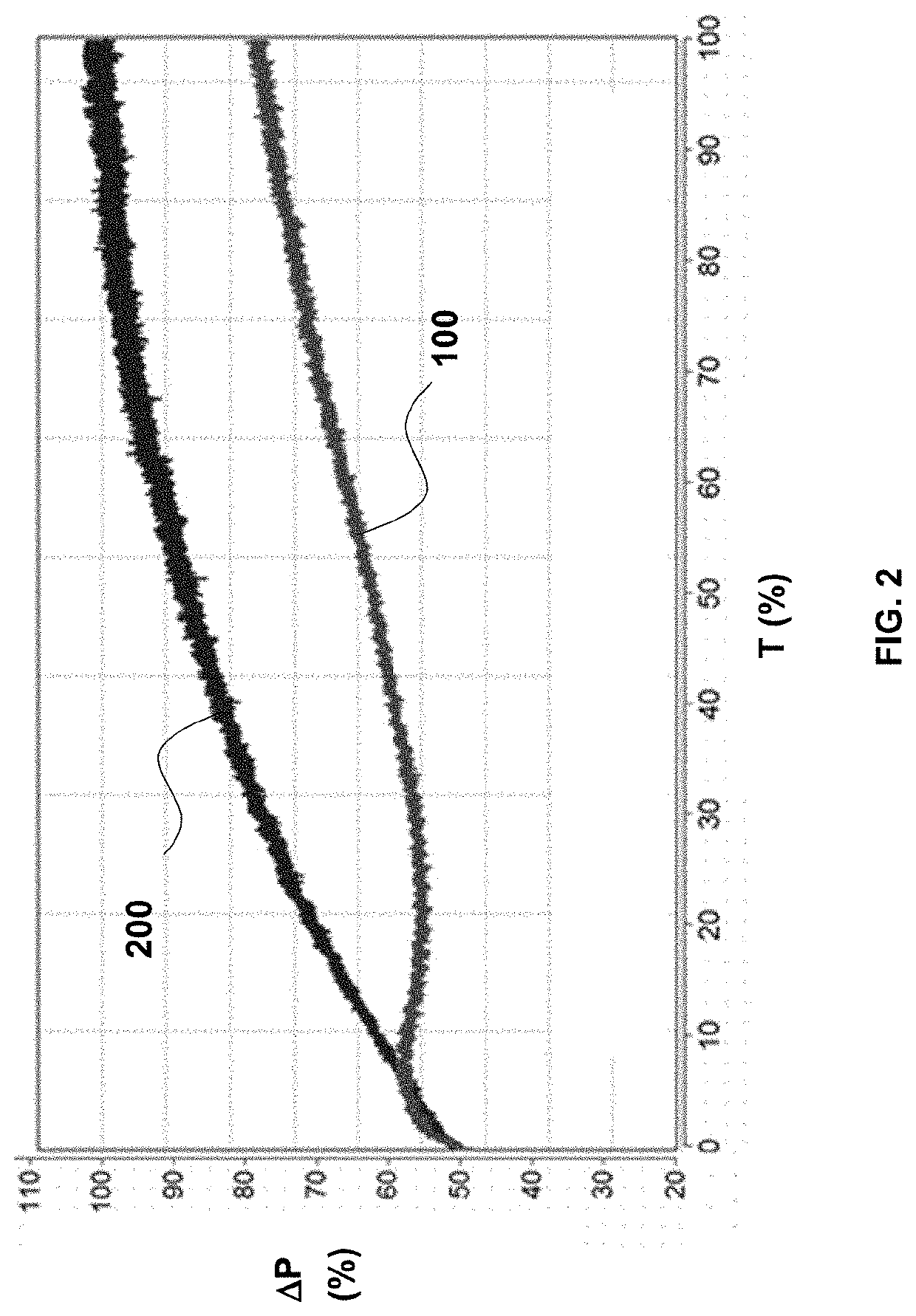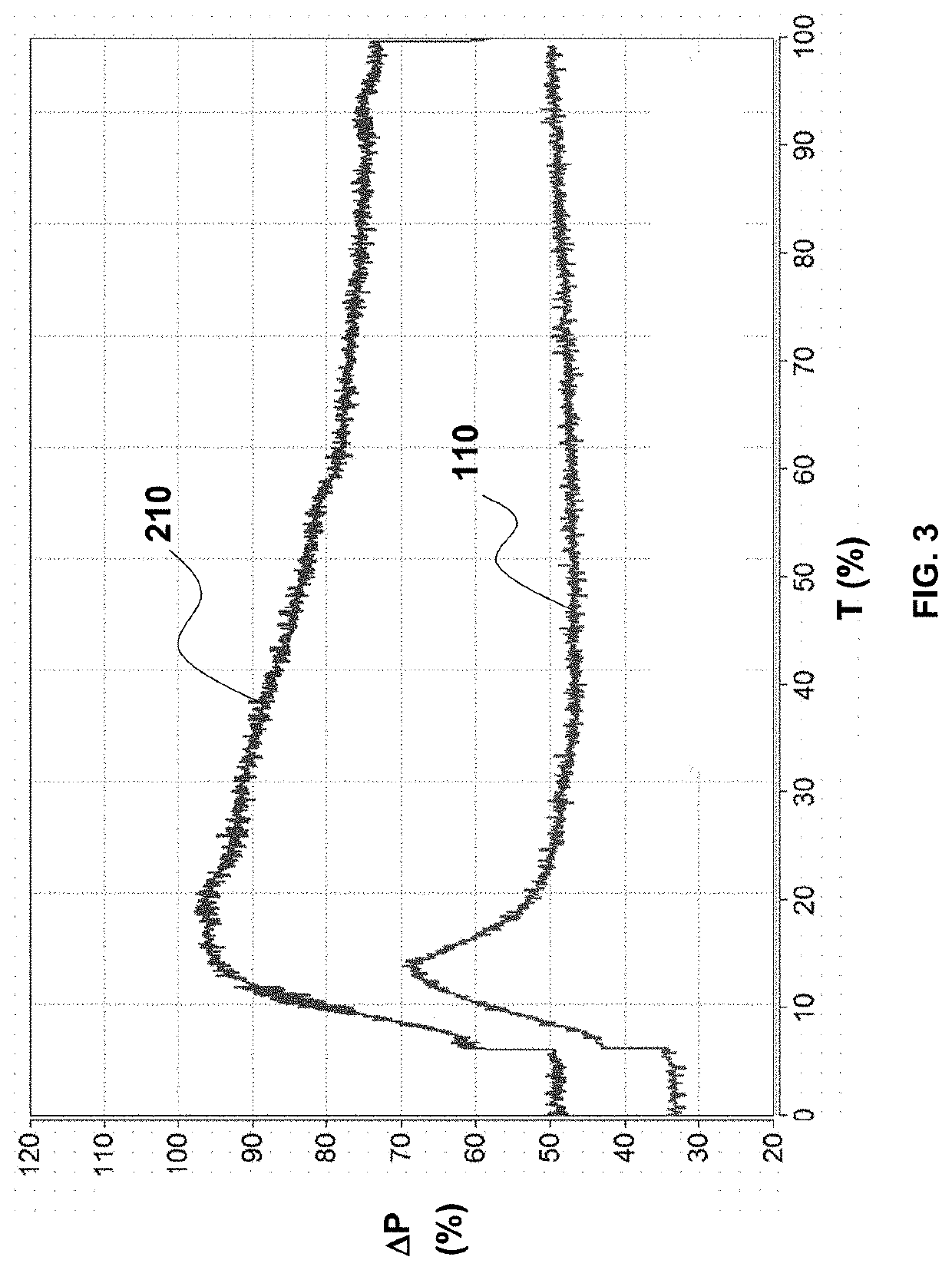Exhaust gas pollution control fluid comprising a soluble basic metal carbonate, process for preparing same and use thereof for internal-combustion engines
a technology of exhaust gas pollution control fluid and basic metal carbonate, which is applied in the direction of machines/engines, separation processes, mechanical equipment, etc., can solve the problems of nox emissions involving a major drawback, ash that remains in the filter and accumulates over the life of the engine, and the use of additives offers few advantages in an already oxygen-rich medium
- Summary
- Abstract
- Description
- Claims
- Application Information
AI Technical Summary
Benefits of technology
Problems solved by technology
Method used
Image
Examples
example 1
Containing 350 ppm Copper Ions
[0111]In this example, the fluid is prepared as follows: 100 g AdBlue® are fed into a 250-cm3 glass bottle containing a magnetic bar, and 0.061 g of a basic copper carbonate of formula Cu2(CO3) (OH)2 (malachite) is added under stirring. This amount of malachite corresponds to a final concentration in the solution of 350 ppm copper in ionic form. After 15 min stirring at ambient temperature, the aspect of the solution is evaluated immediately after it was prepared, and after one week after storage at ambient temperature.
[0112]It can be seen that the solution is homogeneous and it still is after one week. No precipitation is observed.
example 2
Containing 500 ppm Copper Ions
[0113]In this example, the fluid is prepared as follows: 1000 g AdBlue® are fed into a 2-litre Erlenmeyer flask containing a magnetic bar, and 0.87 g of a basic copper carbonate of formula Cu2(CO3) (OH)2 (malachite) is added under stirring. This amount of malachite corresponds to a final concentration in the solution of 500 ppm copper in ionic form. After 2 hours stirring at ambient temperature, the aspect of the solution is evaluated immediately after it was prepared, and after one week after storage at ambient temperature.
[0114]It can be seen that the solution is homogeneous and it still is after one week. No precipitation is observed.
example 3
Containing 80 ppm Copper Ions
[0115]In this example, the preparation mode is similar to that of example 1, except that the amount of basic copper carbonate Cu2(CO3) (OH)2 added to the AdBlue® solution is 0.0139 g. This amount of malachite corresponds to a final concentration in the solution of 80 ppm copper in ionic form.
[0116]The aspect of the solution is evaluated immediately after it was prepared, and after one week after storage at ambient temperature. It can be seen that the solution is homogeneous and it still is after one week. No precipitation is observed.
PUM
| Property | Measurement | Unit |
|---|---|---|
| Percent by mass | aaaaa | aaaaa |
| Temperature | aaaaa | aaaaa |
| Solubility (mass) | aaaaa | aaaaa |
Abstract
Description
Claims
Application Information
 Login to View More
Login to View More - R&D
- Intellectual Property
- Life Sciences
- Materials
- Tech Scout
- Unparalleled Data Quality
- Higher Quality Content
- 60% Fewer Hallucinations
Browse by: Latest US Patents, China's latest patents, Technical Efficacy Thesaurus, Application Domain, Technology Topic, Popular Technical Reports.
© 2025 PatSnap. All rights reserved.Legal|Privacy policy|Modern Slavery Act Transparency Statement|Sitemap|About US| Contact US: help@patsnap.com



